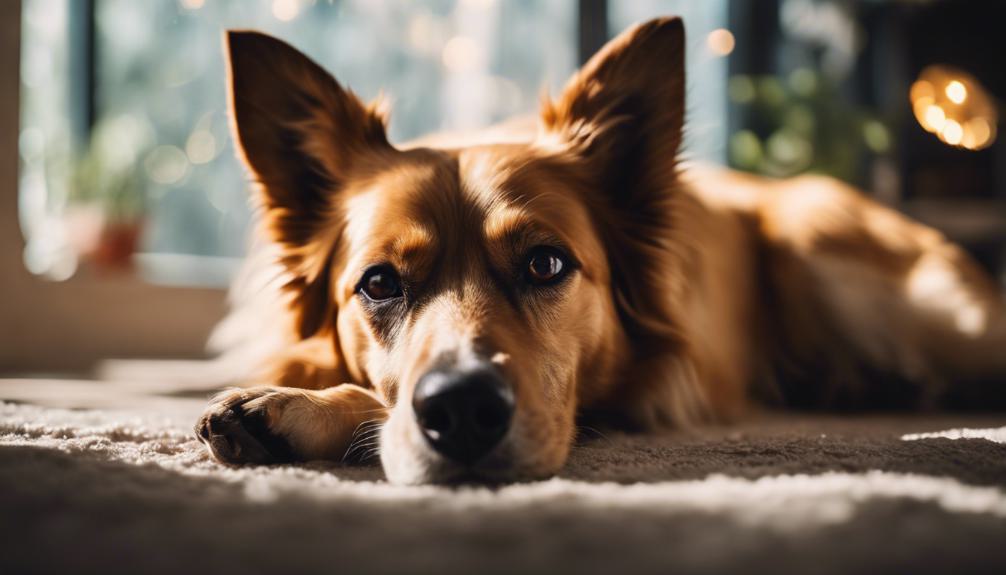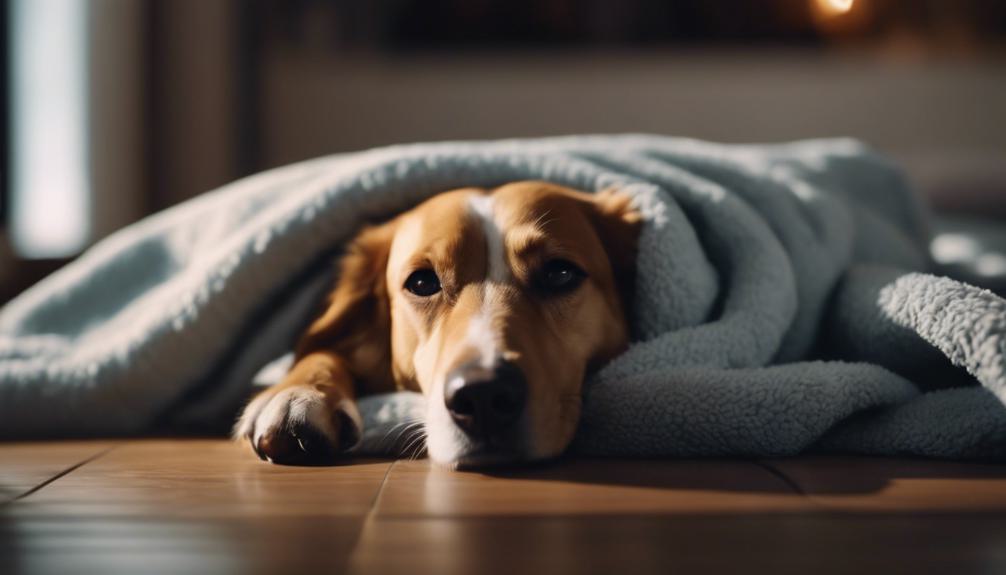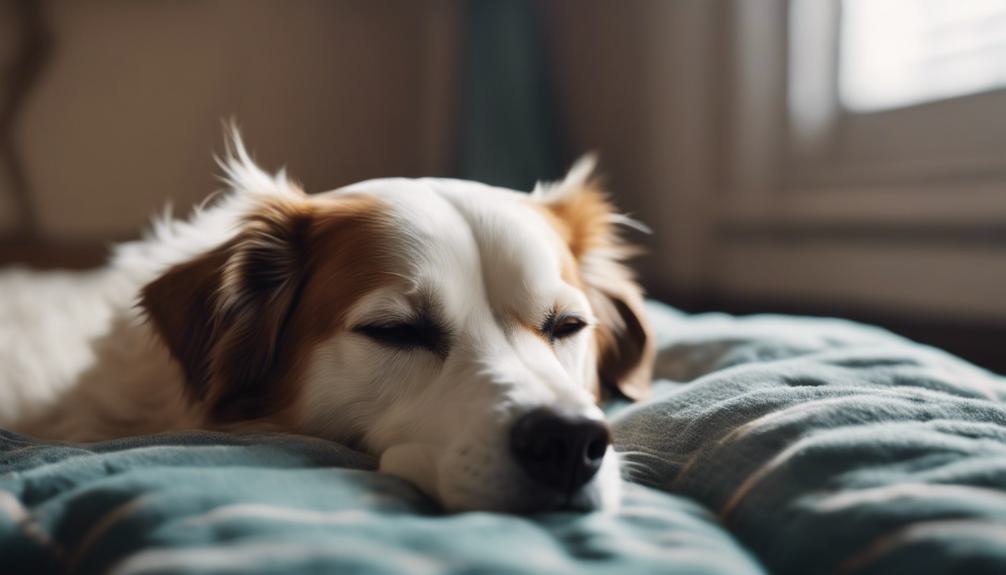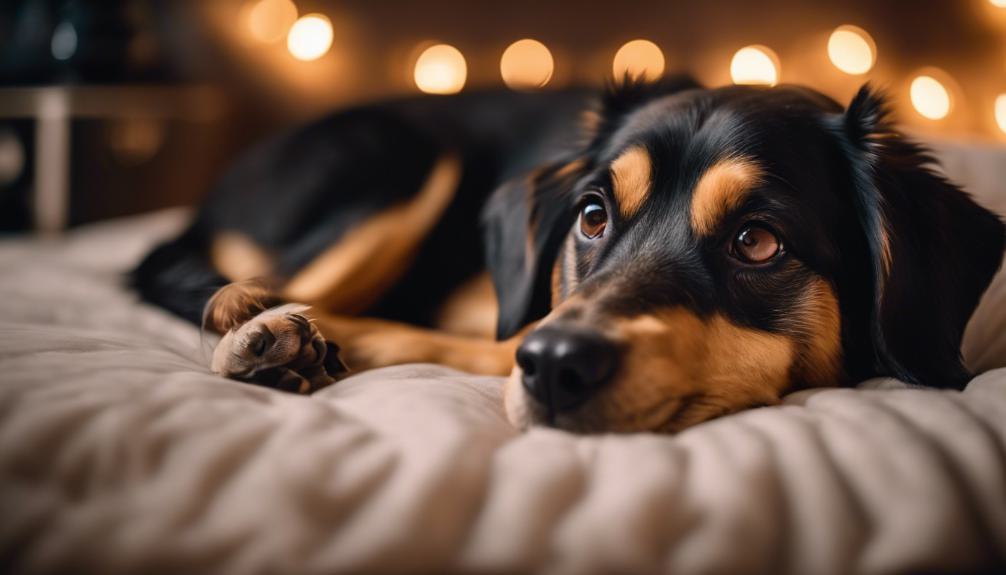How to Train Your Dog to Relax? Stress-Free Training Tips
To train your dog to relax, identify when they naturally unwind. Use a cue like ‘Relax’ to guide their calm moments. Encourage them to settle on a specific mat or bed. Reward their relaxation with praise and gentle pets. Choose peaceful environments to practice and avoid negative associations. Gradually increase relaxation time and maintain positive reinforcement. Try introducing calming aids like music, scents, cozy bedding, or interactive toys. Develop an evening routine that includes soothing activities. Be patient, observe their comfort, and consistently reward calm behavior. Managing excitement levels and staying consistent in training will help your dog relax more effectively.
Teaching Relaxation Techniques
To teach your dog relaxation techniques, first identify situations where your dog already relaxes. This could be after a walk or right before bedtime. Before your dog settles, use a cue like ‘Relax.’ This helps your dog learn when it’s time to calm down. Encourage your dog to move to her mat when you give this cue. Praise her and gently stroke her when she begins to relax. This reinforces the behavior.
Start practicing in environments where your dog feels comfortable. This helps prevent any negative associations with the training process. Over time, gradually increase the length of time your dog spends relaxing on the mat. This will teach her to stay calm in different situations. The goal is for your dog to see the mat as a safe and calming place.
Establishing a Relaxation Routine
Start by choosing a specific mat or dog bed for your dog’s relaxation. This area will serve as a consistent, comfy spot for your dog to relax. Use the following steps to train your dog:
- Reward your dog when it shows interest in the relaxation mat.
- Encourage your dog to lie down on the mat and give a reward for doing so.
- Promote deeper relaxation by rewarding your dog when it rests its head on the mat.
- Slowly extend the time your dog spends relaxing on the mat, rewarding calm behavior throughout.
- Always use positive reinforcement to strengthen your dog’s positive feelings about the relaxation spot.
This approach ensures your dog associates the relaxation spot with comfort and rewards, making it a reliable place for stress relief.
Introducing Self-Settling Signals

Use self-settling signals to teach your dog to relax on your command. These signals include verbal cues like ‘settle’ or ‘relax.’ Consistency is key; always use the same words so your dog connects them with calming down. You can also use non-verbal cues, such as a hand signal or a calm tone of voice.
Introduce these cues at the right time. For instance, start with the ‘relax’ command when your dog is already in a quiet state. This helps him link the cue with the calm behavior. Practice these signals regularly. The more you repeat them, the better your dog will understand and respond to them.
To keep things interesting, vary your approach. Sometimes use a soft voice, other times a hand gesture. This variety helps keep your dog attentive and not bored.
Providing Relaxation Aids
Enhance your dog’s relaxation space by including specific aids that promote calmness. Here are practical suggestions to ensure your dog feels comfortable and at ease:
Play Calming Music or White Noise: Set up a soothing sound environment. This can significantly calm your dog.
Use Aromatherapy: Opt for scents like lavender or chamomile, which are known for their calming effects.
Provide Cozy Bedding: Offer your dog cozy blankets or beds for a secure and comfortable resting area.
Introduce Interactive Toys or Puzzles: Keep your dog mentally stimulated with engaging toys or puzzles, which can also help relax them.
Consider Pressure Vests or Wraps: Products such as Thundershirts can be effective in reducing anxiety and promoting a sense of security.
Implement these aids with advice from a professional trainer who uses positive reinforcement techniques. This approach will help your dog remain calm and content.
Practicing Evening Chill Out Sessions

Develop a consistent evening routine to calm your dog before sleep. Combine playtime and training with soothing activities like gentle petting or slow walks. This mix helps your dog feel relaxed.
Introduce a cue or signal, such as dimming the lights or playing soft music, to signify it’s time to start winding down. Use this period to teach your dog to settle gradually.
Place chew toys or interactive toys on your dog’s bed to keep them quietly entertained while you relax. By following these steps every evening, you’ll help your dog wind down and get ready for a restful night.
Developing Self-Entertainment Skills
To enhance your dog’s ability to entertain themselves, introduce a variety of chew toys and interactive puzzles. It’s crucial to teach your dog to settle and lie down independently to prevent boredom and disruptive behaviors.
Here are practical tips to boost your dog’s self-entertainment skills:
Introduce fresh toys and puzzles frequently to keep engagement high.
Set up a designated spot, such as a mat or bed, for your dog’s solo playtime.
Use interactive toys that release treats to challenge your dog mentally.
Alternate between different activities and playtimes to keep your dog interested.
Develop a regular routine for self-settling to aid your dog in relaxing and entertaining themselves effectively.
Patience in Training

Practice patience in your dog training sessions to teach your pet to relax effectively. Dogs pick up on your emotions; a calm demeanor is crucial. Observe your dog’s body language to gauge their comfort in various settings. Each dog learns at a different speed. Show empathy and maintain patience.
Regularly practicing and positively reinforcing calm cues will teach your dog to associate these behaviors with good results. Reward even small signs of calmness to encourage more frequent relaxed behavior. Ensure the training environment is quiet and supportive, making your dog feel secure and aiding their learning process.
Rewarding Calm Behavior
Train your dog to relax by rewarding calm behavior. Use treats or praise to reinforce relaxation.
Here are practical tips to help you reward your dog effectively:
Speak calmly and pet gently to encourage a relaxed state. Provide a cozy mat or bed for a specific relaxation area.
Reward calm behavior in different settings to make it a regular habit. Always reinforce relaxation to teach your dog to relax on command.
Understand that consistent rewards make calm behavior a natural response for your dog.
Managing Excitement Levels

Control your dog’s excitement by using training methods that help them stay calm. Start by teaching basic commands like ‘sit’ or ‘down.’ Use a clicker to mark these behaviors, reinforcing them effectively. Reward your dog when they sit on their own, fostering calmness as a regular behavior.
Incorporate relaxing activities such as gentle fetch games or quiet playdates. These help lower their energy levels and teach them to manage excitement. Steer clear of highly stimulating places like dog parks, ensuring your dog remains comfortable and not overwhelmed.
Consistently apply these techniques to teach your dog to relax and control their excitement. Use patience and positive feedback as your main tools. By maintaining a steady approach, your dog will learn to handle their enthusiasm in a balanced way.
Consistency in Relaxation Training
Ensure success in relaxation training for your dog by embracing consistency. Here’s how to effectively calm your pet:
Signal relaxation time with the same cues. Use a specific word or gesture consistently so your dog knows when to settle down.
Include daily exercise. A routine of physical activities, like walks or fetch, helps burn off extra energy and aids in calming your dog later.
Set a regular training schedule. Stick to specific times for relaxation sessions to keep improving.
Practice in different places. Train your dog to be calm in various settings, such as at home, in a park, or during visits to friends.
Reward calm behavior. Always give your dog a treat or verbal praise during training to reinforce good behavior.
Frequently Asked Questions
How Do You Calm an Overstimulated Dog?
To calm an overstimulated dog, create a quiet environment, play calming music, avoid stimulating places, engage in gentle activities, and allow for rest breaks. These steps can help your dog shift from excitement to relaxation effectively.
Can Dogs Be Trained to Be Calm?
Yes, dogs can be trained to be calm through positive reinforcement. Consistent practice and patience are essential. Teaching relaxation techniques to your dog is beneficial for their well-being and can help reduce anxiety in various situations.
At What Age Do Dogs Calm Down?
Dogs typically start calming down at 1 to 2 years old. Factors like breed, personality, and environment play a role. Larger breeds may take longer to mature. Neutering/spaying can affect behavior. Consistent training and socialization help dogs relax at any age.
What Are the Relax Commands for Dogs?
To teach your dog the relax command, initiate the process by capturing moments of natural relaxation and pairing them with a cue like ‘Relax.’ Be consistent and patient. Using positive reinforcement, you can help your dog settle and manage arousal levels effectively.
Conclusion
Now that you’ve mastered training your dog to relax, remember the key elements: patience, consistency, and rewards.
Teach relaxation techniques like deep breathing or gentle petting. Establish a daily routine to help your dog know what to expect.
Use aids such as calming music or a comfortable resting spot. Practice calming sessions each evening and control excitement levels throughout the day.
Over time and with steady effort, your dog will master the skill of relaxation.

